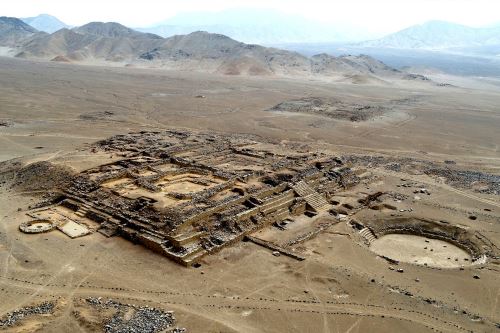00:00 | Barranca (Lima region), May. 23.
Caral astonishes the world once again with a valuable archaeological discovery. A team of professionals from the
Caral Archaeological Zone (ZAC) Executive Unit 003 (attached to the
Ministry of Culture) has discovered a new "Altar of Fire" at the Era de Pando archaeological site, located in Supe Valley, Barranca province, Lima region.
The Altar of Fire discovered at the Era de Pando site is circular in shape and measures approximately 7 meters in diameter. It is preceded by a rectangular courtyard measuring 16 meters long and 8 meters wide.
According to the researchers, this sacred enclosure is accessed by a staircase that descends from the Ceremonial Hall on the west side of this pyramidal building.
The archaeologists, led by the director of the
Caral Archaeological Zone Ruth Shady, explained that
this Altar was built on the west side of the Major Public Pyramidal Building "C1" at Era de Pando, serving as a subsidiary enclosure for secondary activities supporting the central ceremonies held in the Main Building.
The Altar of Fire is an enclosure that was used exclusively to perform ceremonies of great importance in Caral society, 5,000 years ago.
In the Caral civilization, the Altars of Fire were built in the most important public pyramidal buildings of the city, as well as in spaces near the main residences. Only certain religious, political, and social authorities had access to them.
In these altars, which stand as a testament to the production of knowledge in science and technology, the leaders, in private ceremonies with their corresponding social group and close associates, incinerated offerings such as beads, quartz fragments, fish, mollusks, and agricultural products.
Era de Pando
The Caral Archaeological Zone reported that Era de Pando is one of the main settlements of the Caral civilization, with a history spanning more than 4,000 years.
It is located in the Lower Valley and the right bank of the Supe River, 12.5 kilometers inland from the coast, at an elevation of 200 meters above sea level.

The archaeological site covers 57.93 hectares and consists of 48 buildings, distributed around a central space. Four of them are major pyramidal buildings, four are minor pyramidal buildings, and the other 40 are smaller temples and residences with various characteristics.
The ZAC stated that Era de Pando stands out for its importance over time, monumentality, and its hierarchical role in the history of Caral society.
It is located on an important natural route connecting the Pativilca Valley and the Taita Laynas interbasin. Likewise, its proximity to the sea and extensive agricultural areas helped the settlement gain significance.
When the Sacred City of Caral – Supe, a World Heritage Site, was at its peak, Era de Pando was only a small settlement with one or two pyramidal buildings. In later periods, it became part of the broader hierarchy of settlements distributed throughout the valley.
Finally, it was noted that at Era de Pando, in addition to the buildings, various objects related to domestic and ceremonial life have been found, such as figurines, stone tools, and others made of organic material.

(END) NDP/MAO/JMP/MVB
Published: 5/23/2025